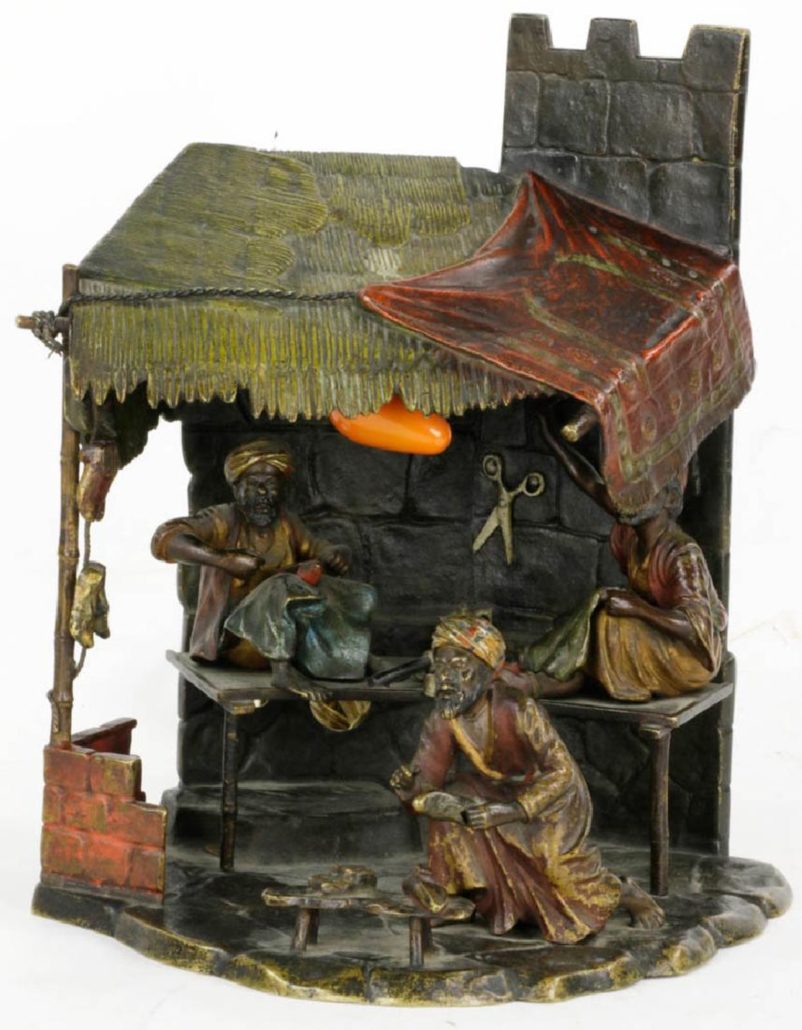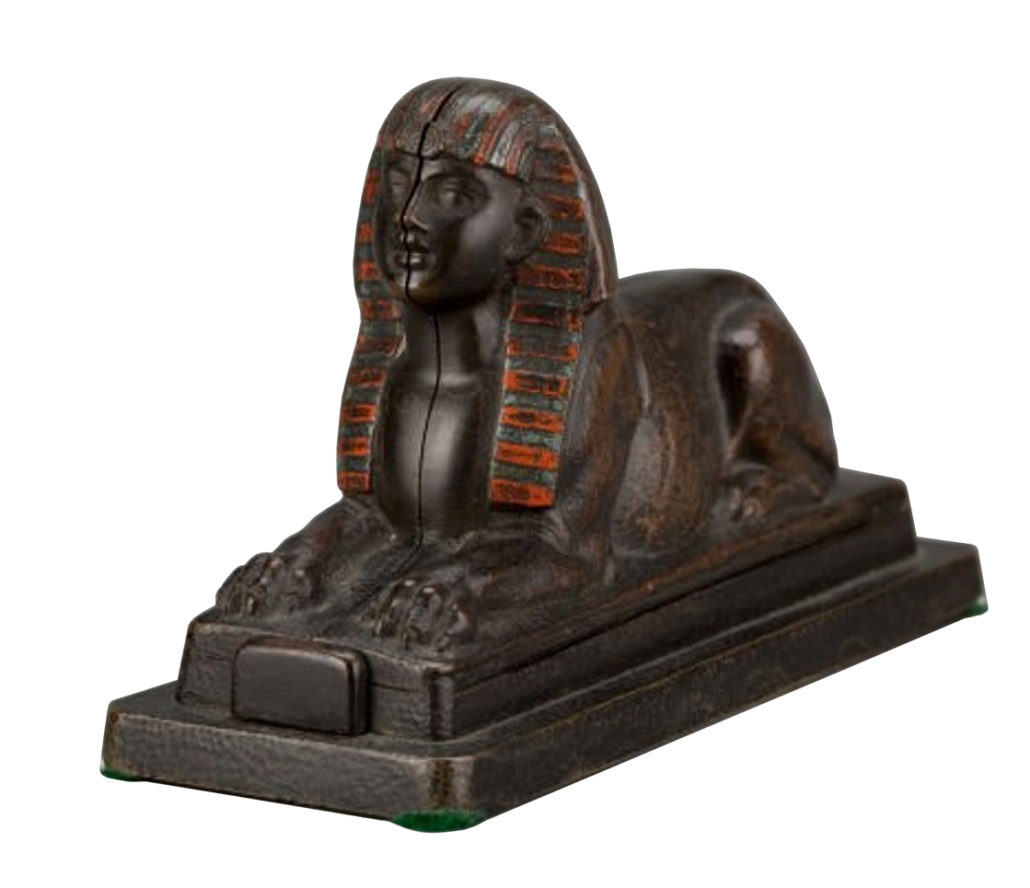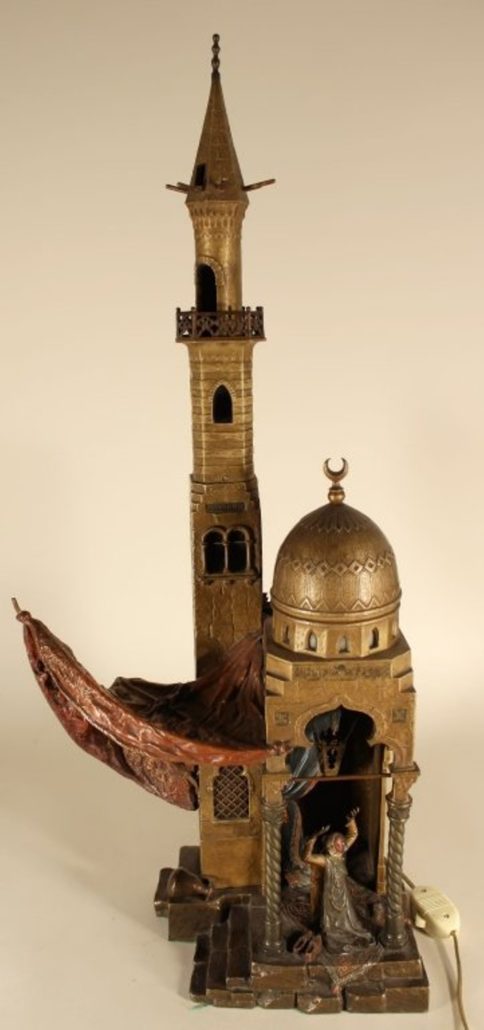
NEW YORK — A Vienna bronze is an artistically finished sculptural work made in the exacting Viennese handcraft tradition that began around 1850 in Austria. In the early days, such bronzes were cast using the “cire perdue” or “lost wax” technique.
Many of these lovingly handcrafted figures are collected widely around the world and are actually still made to this day, although the casting techniques have changed. The earlier process of developing finished bronzes from raw casts required many hours of manual labor by skilled bronze foundry workers known as “chasers.” These artworks were also called “cold-painted” bronzes, referring to pieces cast in Vienna bronze, then hand-decorated in several layers of so-called “dust” paint. The technique is still used today by Wiener Bronz Manufaktur and other makers.
Whether incorporated into a figural table lamp or diorama, or created as a standalone figure, antique Vienna bronzes often took the form of animals, from a whimsical monkey to a very lifelike Spitz dog; or embraced erotic or Orientalist themes. Other popular categories represented in Vienna bronzes include Art Nouveau and Art Deco subjects, mythology, miniatures, circus and carnival; and children.

Asked what the most desirable themes of Vienna bronzes are, Tom Curran, vice president of Litchfield County Auctions in Litchfield, Conn., said, “It’s still Orientalist themes, but also erotica, the American West, Art Deco and unusual subjects. “Mechanical bronzes with moving elements are desirable, such as armoires that open and close etc., often with hidden erotic subjects.”
Harry Morgan, Director of Appraisal Services at Kaminski Auctions, Beverly, Mass., said virtually all Vienna bronze themes are popular. “In animals, it’s both domestic and exotic, but people generally like lions, tigers and elephants more than cows and dogs, and that type.”
Perhaps the best known maker of these bronzes was Franz Bergman, who famously did a whole line of Orientalist works. “He used a second name (to sign his works) which is sometimes Namgreb, which is Bergman backward,” Morgan explained. “He did that because it was in the late Victorian period. He didn’t want to offend his normal Victorian buyers with the company’s line of risque bronzes, so he used this name.” For example, one Bergman bronze featured a harem woman belly dancing. When a lever or button was pressed, the piece would open and the woman would be seen completely nude.

When considering bronzes, “Size matters, and the largest one often brings more than the tiny ones,” Morgan added. Details and moving parts also add to the value.
While the auction market for this genre has slipped overall, Curran said, the best examples retain their value. ” The popularity of the cute ones — dogs, cats, and monkeys — has really dropped.”
Morgan agreed that while prices can vary widely, but said that Vienna bronzes “are still doing generally very well” in Kaminski’s sales.

What should new collectors know before buying?
Curran stresses that buyers should look for “authenticity, original casts, legitimate prices versus bargains, condition, and … identified sculptors — Hagenauer, Bergman, Zach, Kauba etc., and never ‘Vienna bronze style.'”
For a new buyer jumping into collecting, Morgan said, “The biggest thing like anything else is to become educated. Read what you can, look [online] at what things are selling from, buy from a reputable dealer, get a receipt that says age…”
Reproductions abound, Morgan said, from older pieces being repainted, which hurts the value, to pieces that are outright forgeries with copied hallmarks. “You have to be an educated buyer these days.”
# # #


